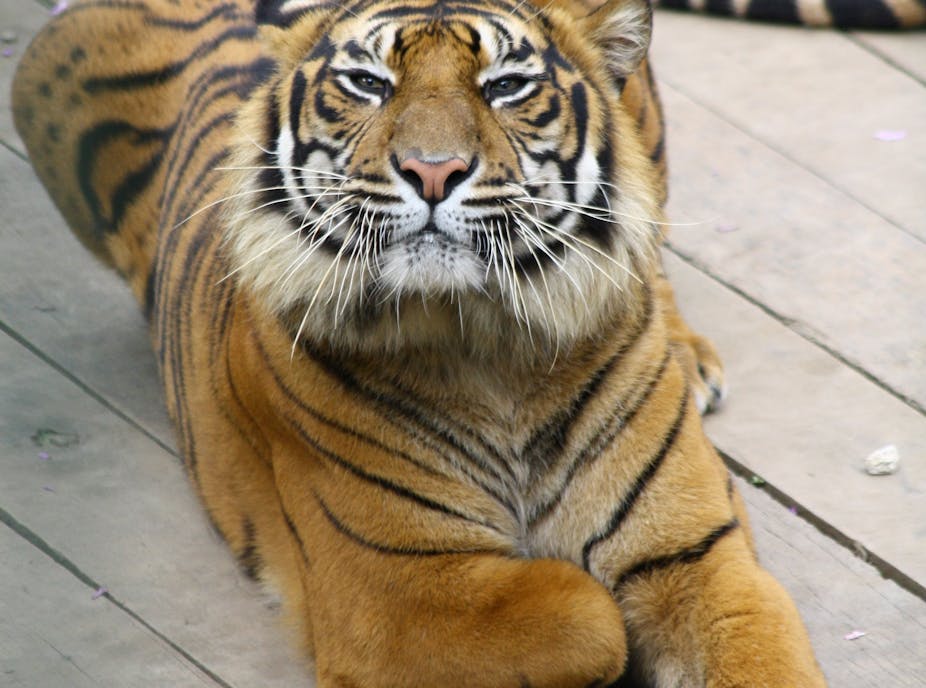It might seem astounding that a wild animal could survive a limb amputation and still thrive in the wild but videos from social media and research show this may be more common than people realise. Many wild animals not only survive the health risks of amputation, but go on to learn how to adapt to their new bodies, whether by themselves or with the help of others in their family.
Perhaps one of the most unbelievable cases was a video of a two-legged adult red fox taken January 2023 in Derbyshire, England.
It’s hard to tell what happened to the fox, but despite the fact it was missing both back legs it appeared to be in good health as it had clean and well-groomed fur. In the video, the fox goes about the business of scent marking with the grace of a gymnast, controlling its body with perfect balance and ease.
A 2015 study of dog owners found 91% of participants perceived no change in their dog’s attitude after amputation. However, medical aftercare will have reduced the chances of infection, and pets don’t need to forage or hunt if their owner buys food for them.
Wildlife can get caught in snares and may lose a limb trying to escape. If the animal is able to survive the trauma, limb loss will undoubtedly affect its ability to find, catch or eat food, or even outrun a predator.
Limb loss affects every species differently. Foxes, for example, do eat meat but also fruit, vegetables and insects. This omnivorous diet and their willingness to scavenge from humans probably contributed to the two legged fox’s survival as it doesn’t have to hunt prey.
Learning to live with it
Diet flexibility is not an option for carnivores however. The survival chances of a carnivore who loses a limb depends upon which limb or how much of it is lost.
A study comparing how dogs move with and without amputations found dogs use front limbs to slow down whereas back limbs are used for moving forward. So losing a back leg means they won’t be able to move as fast. Dogs carry more weight on their front legs so their centre of gravity changes more when a front limb is lost. This will make balancing harder, at least initially.
Both of these changes will affect other four-limbed animals and have serious repercussions on the ability of a predator to catch prey.
In 2011, an adult male lion’s back limb was severed by a poacher’s snare in Uganda, a fate which is common across the world. However, he seems to have endured at least five years in Murchison Falls National Park. The sight of a three-legged adult lioness struggling on a muddy river bank in Kafue National Park, Zambia in 2016 prompted an initiative to remove snares in the park. Although it was clearly tough for her, the lioness was surviving.
Both lions’ injury was to a back leg. When hunting large prey like buffalo, lions launch themselves on to the prey using their back limbs, hold on with their front limbs and use their body weight to slow the prey down.
Lions may also use their front limbs to swipe at a prey’s legs during the chase. But crucially, front claws can be used to grip the prey’s neck or head either while delivering the killing bite to the throat or while the lion’s jaw is clamped around the prey’s nose and mouth. The loss of a back limb will make the chase and catch harder. However, the loss of a front leg would affect their ability to kill prey by themselves.
Since lions live in groups, the injured lions may have been able to depend on family members to provide support during a hunt or, more likely, access to food once it has been caught.
Lone hunters, such as male tigers, use their paws in a similar way to lions during a hunt but do not normally rely on other tigers’ help. Incredibly though, a healthy looking male tiger was caught on camera in 2007 with the lower part of his right leg missing in Tesso Nilo National Park, Sumatra. Like all big cats, tigers eat a wide variety of prey from birds to large deer. The injured male may have focused on hunting small prey, which tigers can kill with a bite to the back of the neck. The injured tiger may have also turned to easier sources of food than wild prey such as livestock.
The devastating effect of snares
Snares are a problem the world over. While working in South Africa as a guide just over a decade ago, I saw elephants with amputated trunks, sometimes up to two thirds shorter than they should have been. Trunks are invaluable to an elephant because they have such short necks. An elephant’s trunk allows it to drink, pluck fruit and grass with pinpoint accuracy, pull down out of reach branches and transfer food to their mouth. Elephants also use their trucks to greet and communicate with other elephants.
And yet, some are able to adapt to trunk injuries, probably because elephants have close family bonds. I do not recall seeing any lone elephants with these injuries.

A study in Central Africa Republic found 38% of animals (including elephants, gorillas and pangolins) caught in snares managed to break them and escape, albeit with the snare still attached to them. But 3% left their limb behind (including African brush-tailed porcupines, small mammals called African palm civets and a type of small antelope called duikers). Another study from India that looked at camera trap images reported sloth bears, leopards, elephants, sambar deer and dhole wild dogs with snares around their bodies.
It shows incredible resilience that these animals survived a snare without succumbing to shock, exhaustion, blood loss or infection, as so many other animals inevitably do. These wild miracles are more than an inspiration – they should be a wake-up call for the damage humans are doing to animals globally.

